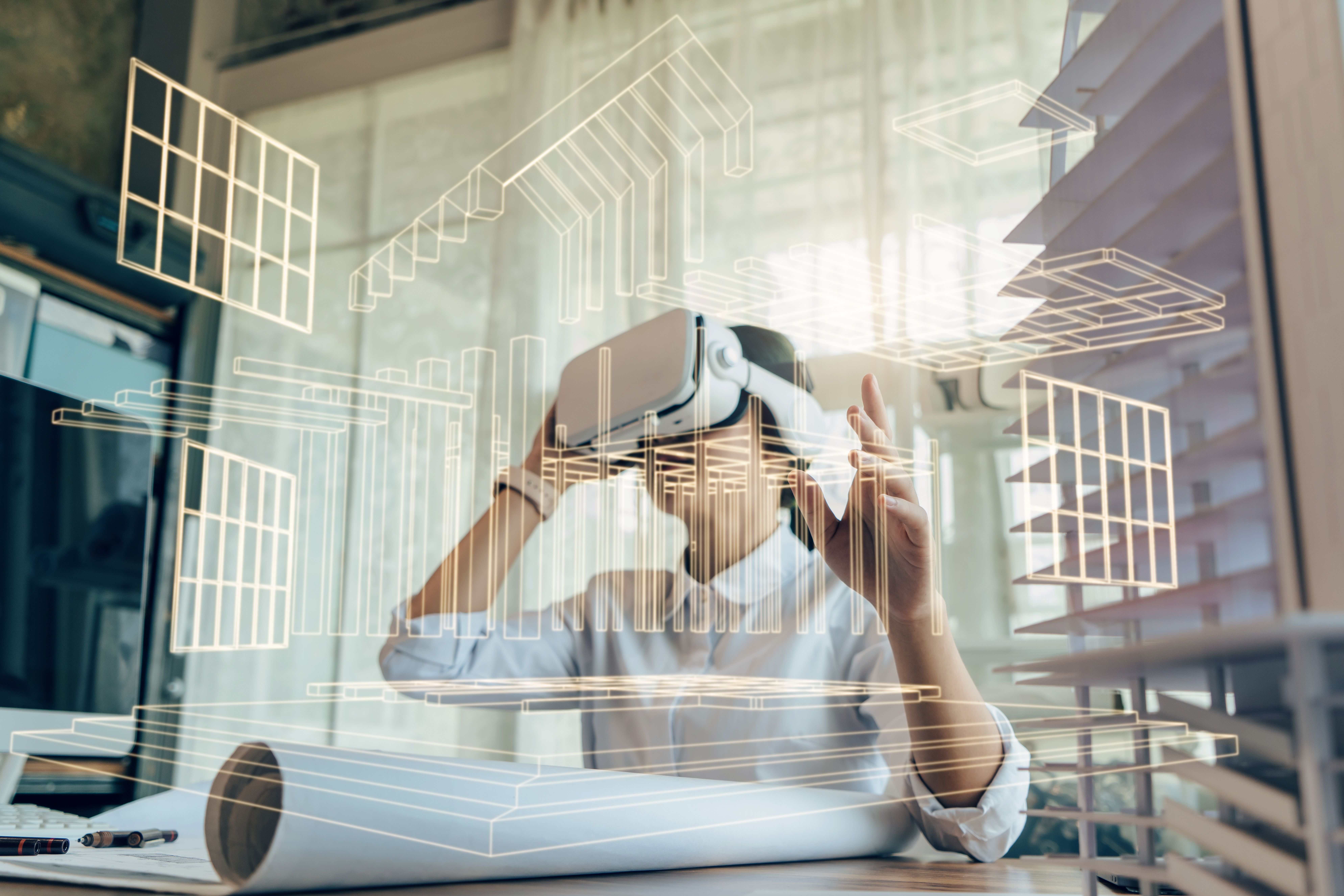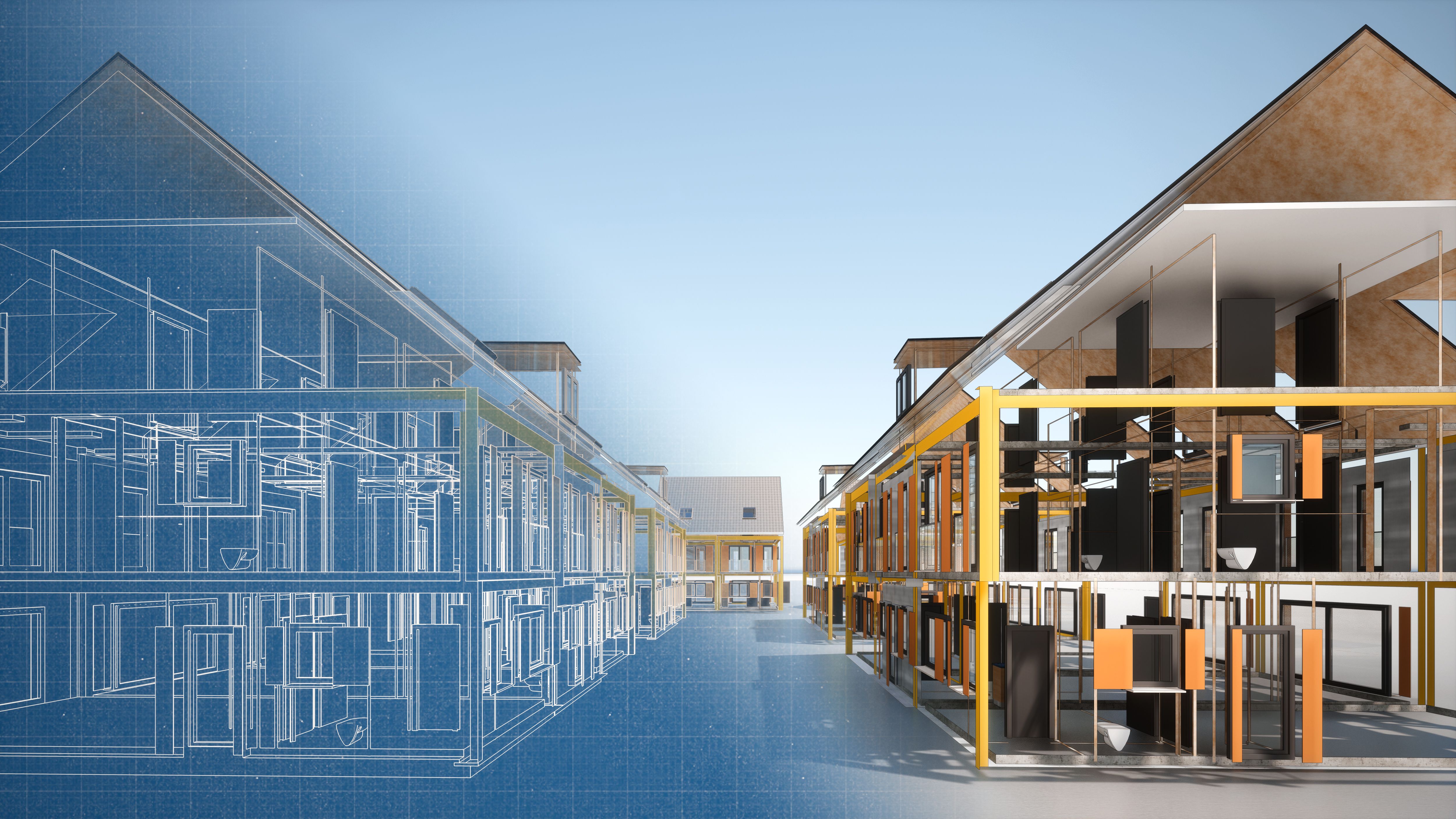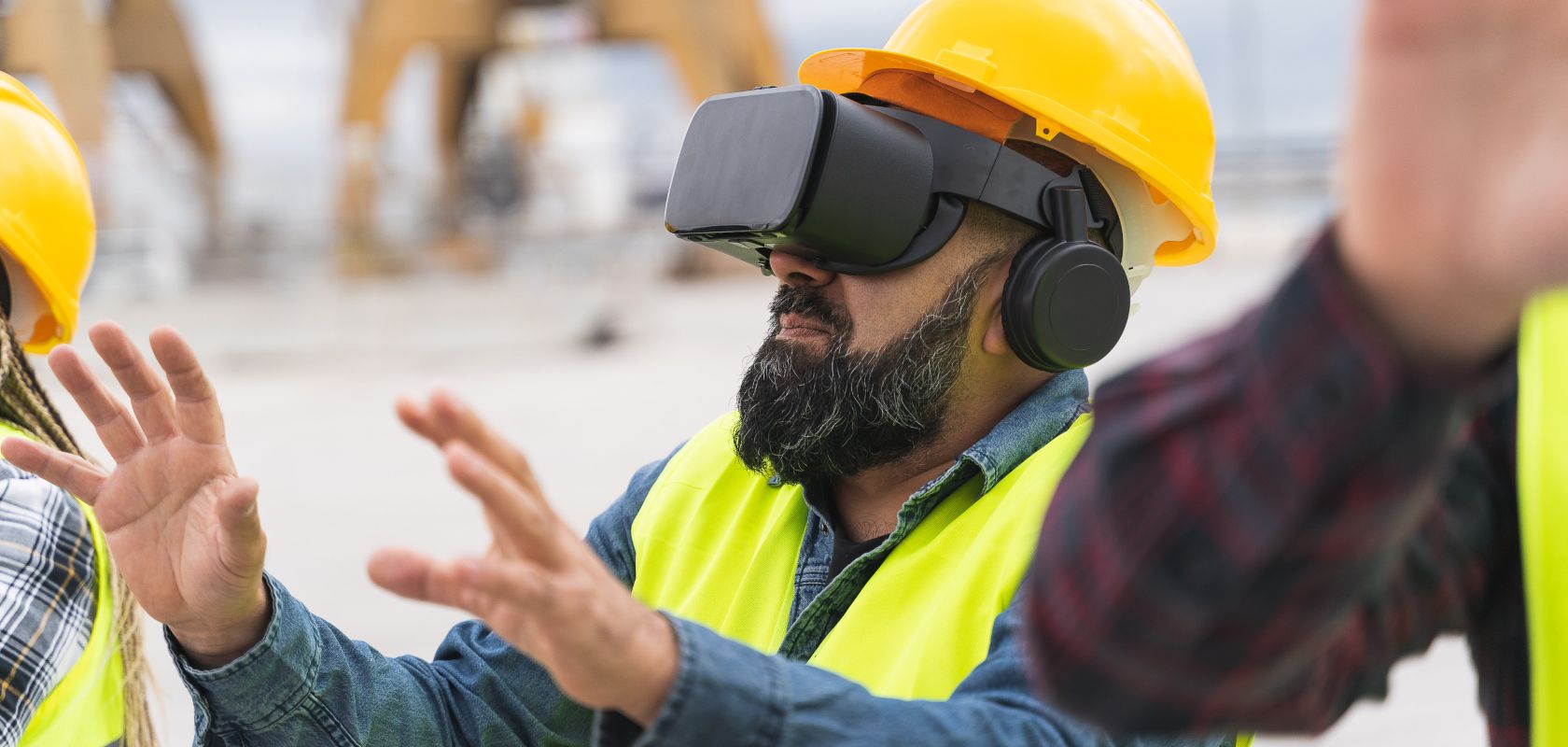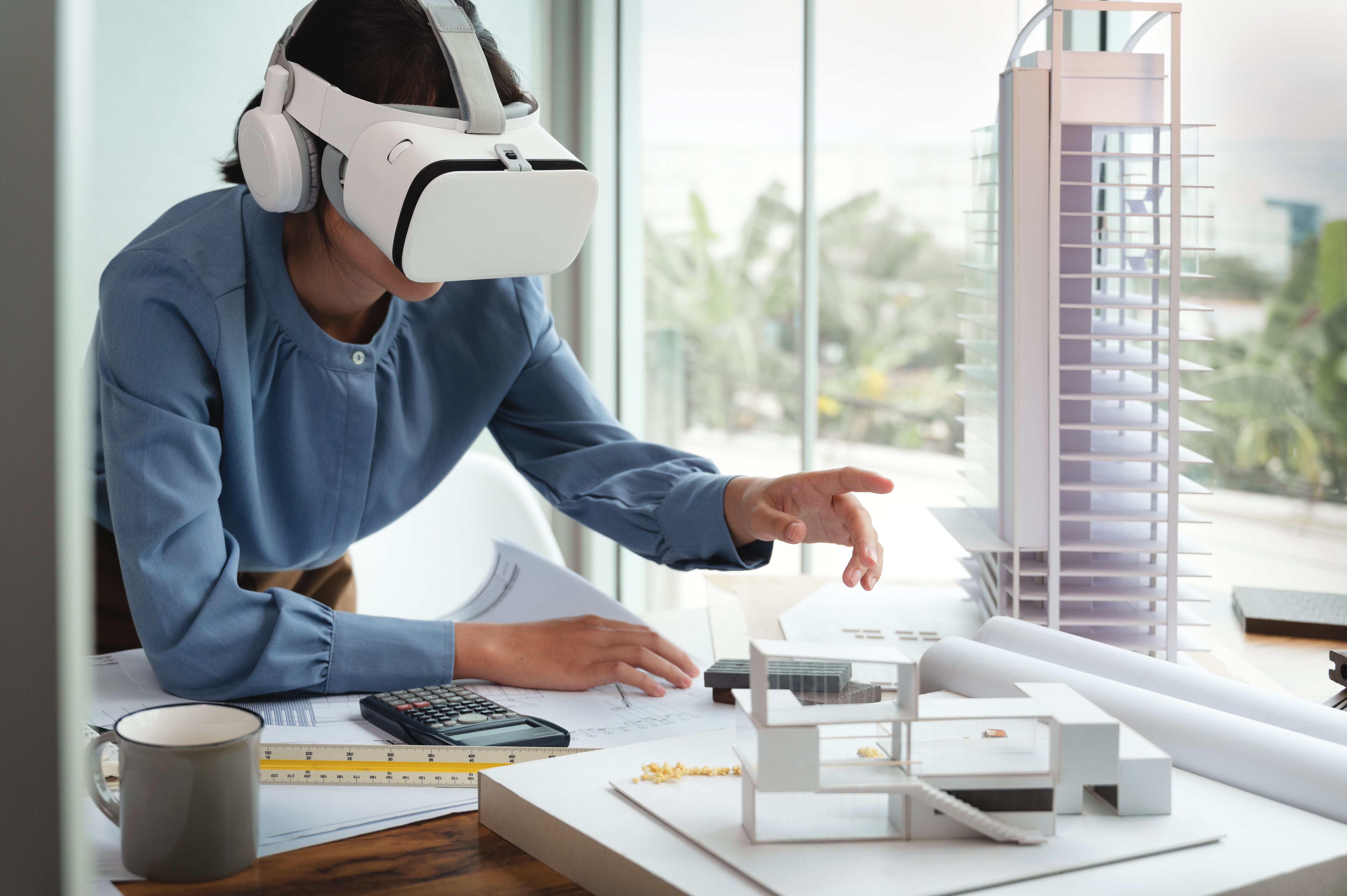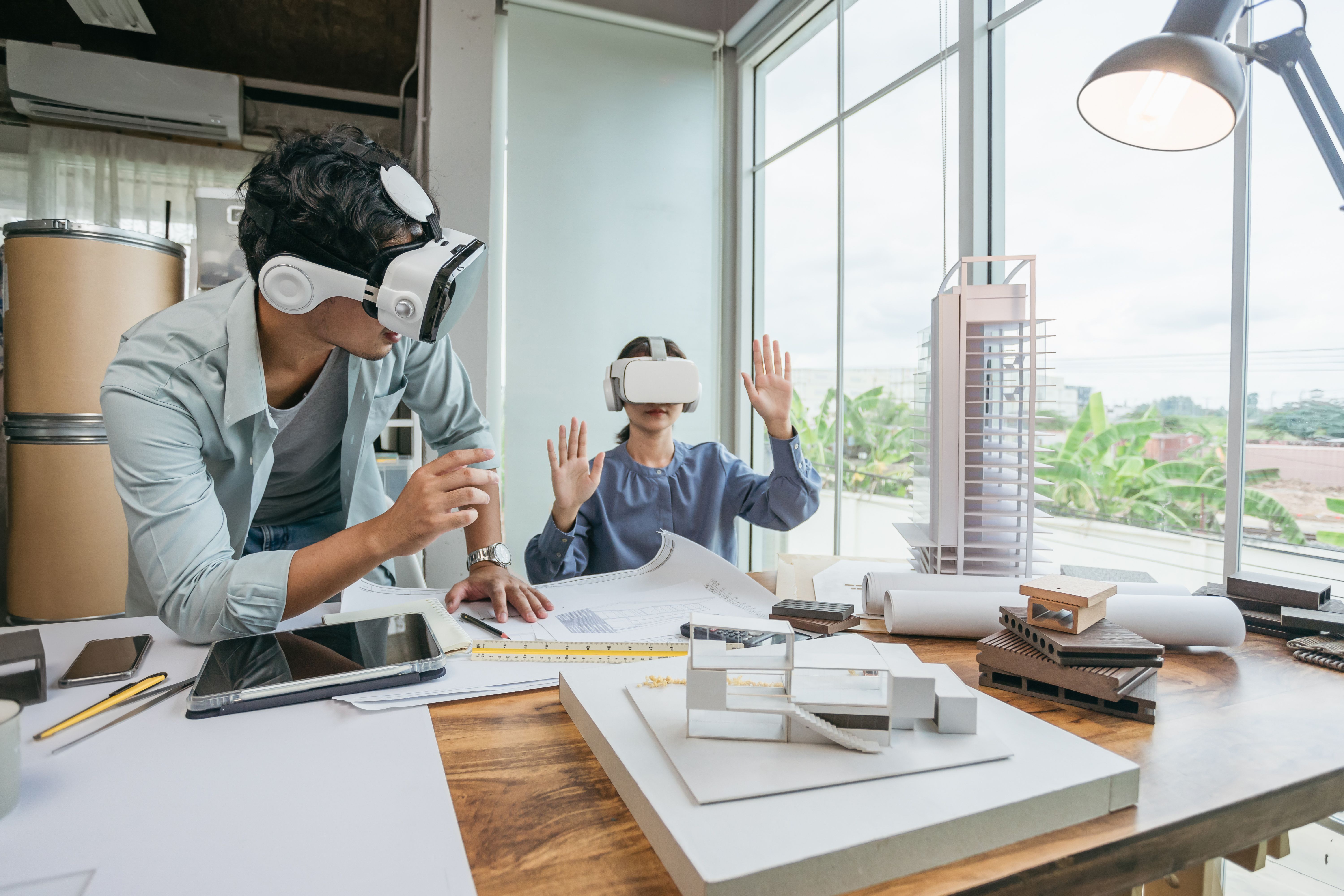The construction industry is changing because of the introduction of innovative technologies.
Construction companies are now using Building Information Modeling (BIM) and virtual reality (VR) to improve the accuracy of their designs, speed up the construction process, and reduce costs by enhancing efficiency and collaboration. In this blog post, we will discuss how BIM and VR are revolutionizing the construction industry. We will also reflect on the future of the industry amid the utilization of these technologies.
BIM and VR: How They Work Together to Revolutionize Construction Projects?
BIM, or building information modeling, is a process that uses digital models to create a virtual representation of a construction project. Currently, BIM is considered the foundation of digital transformation in architecture, engineering, and construction workflows.
Sarah Lorek explains that BIM is a highly collaborative process “that allows architects, engineers, real estate developers, contractors, manufacturers, and other construction professionals to plan, design, and construct a structure or building within one 3D model.” In addition, BIM can also span the operations and management of buildings by using data provided by building or structure owners.
VR, or virtual reality, is a technology that allows users to interact with and experience digital environments. In other words, virtual reality can be defined as a computer-generated environment in which scenes and objects seem to be real. With these images of reality in mind, users will tend to feel more immersed.
When used together, BIM and virtual reality can revolutionize the construction industry by providing an immersive and realistic way to visualize projects. Additionally, cutting-edge technologies like BIM and VR add accuracy, safety, productivity, flexibility, and efficiency to the entire construction project life cycle.
Current Applications of BIM and VR in the Construction Industry
Both virtual reality and BIM have been found to be very useful in the construction industry. VR can be used for training purposes, such as safety training or equipment training. It can also be used for pre-construction planning, such as checking site conditions or designing layouts.
On the contrary, BIM has helped coordination purposes, such as coordinating between different trade contractors. It can also be used for quality control and assurance purposes, such as checking for code compliance or identifying potential problems.
Virtual reality and BIM are both very powerful tools that are just starting to be used in the construction industry.
For example, Mindesk, a Vection Technologies’ 3D tools for immersive design, is used by architects, designers, and engineers to build CAD and BIM projects in multi-user virtual reality environments. This allows Mindesk to transform into the promise of real-time design and collaboration for the construction industry. When it comes to design review and real-time rendering, Mindesk is the solution for Autodesk Revit professionals. Try it for yourself and see the difference.
How do BIM and VR Technologies Benefit the Construction Industry?
Here are six benefits of introducing BIM and VR Technologies into the construction industry:
Detecting errors at the beginning of the construction project:
The construction industry is always looking for ways to build faster, better, and cheaper. In recent years, virtual reality and BIM have been hailed as potential game-changers in this regard.
In addition, VR technologies allow workers to walk through a virtual model of the project before a single brick is laid, which can help identify errors and potential problems.
BIM, on the other hand, is a software application that can be used to create a virtual model of the project. This model can be used to detect errors at an early stage, as well as to track progress and monitor changes.
As a result, virtual reality and BIM have the potential to revolutionize the construction industry by helping detect errors at an early stage.
Optimizing costs and schedules:
Virtual reality and BIM optimize both costs and schedules. VR can be used for everything from project design to final inspections, allowing for a greater degree of accuracy and collaboration between team members.
BIM is a powerful tool for managing projects, providing real-time insights into project progress and cost. When used together, virtual reality and BIM can help building companies save time and money, while also ensuring that projects are completed on schedule.
VR technologies can also be used to create virtual models of projects, which can then be used to plan and execute the work. By using virtual reality, building companies can avoid costly errors and delays, as well as improve communication between team members.
BIM can also be used to create virtual models of construction projects. However, its main purpose is to provide real-time data on project progress and cost. This data can be used to identify potential problems early on, preventing them from becoming expensive mistakes.
Improving collaboration:
Virtual reality is increasingly being utilized in the construction sector to promote engagement with stakeholders and on-site personnel. It allows all project stakeholders to immerse themselves in the virtual environment and experience the construction project from a variety of perspectives. This can help improve communication and understanding between all parties involved in the project.
VR technologies can also be used to provide training for on-site workers, allowing them to familiarize themselves with the construction site before work begins. Hence, virtual reality is a powerful tool that can help improve collaboration and communication in construction projects.
Increase the quality of delivery:
Virtual reality and BIM are two relatively new technologies that show great promise for transforming the construction industry since both have the potential to increase the quality of delivery in construction projects and make the planning and execution phases more efficient and effective.
VR can help designers catch errors before they become costly problems, and BIM can help contractors avoid costly mistakes by providing a clear and concise model of the project.
Avoiding rework costs:
Together, VR and BIM have the potential to greatly reduce the number of rework costs in construction projects. By catching errors early on, virtual reality can help avoid costly delays and change orders. And by providing a more comprehensive view of a construction project, BIM can help managers better identify potential issues before they cause problems.
Make the project more accessible for your clients:
The construction industry is notoriously difficult to access for clients. VR and BIM can help to change that. Virtual reality provides an immersive experience that can help clients understand complex construction projects. BIM, on the other hand, offers a detailed view of the project that can be easily shared with clients.
Virtual reality may provide clients with a better understanding of the project, while BIM can provide them with detailed information about the construction process. As a result, these two technologies have the potential to make construction projects more accessible to a wider range of clients.
What difficulties does the construction sector face, and how can BIM and VR assist to overcome them?
The construction sector is no stranger to difficulties. High costs, long timelines, and difficult working conditions are just some of the challenges that construction companies face daily. However, there is one area where construction companies have been struggling to keep up: digitalization.
In an industry that is still largely reliant on paper plans and manual labor, the construction sector has been slow to adopt new technologies. However, this is beginning to change, as more and more companies are starting to see the potential of VR and BIM. Virtual reality can be used for everything from design and construction to site inspections and safety training. VR walkthroughs can also be used by clients to get a realistic sense of what the finished project will look like. Meanwhile, BIM can be used for everything from better project management to streamlining the construction process.
Takeaway
It's no secret that the construction industry is undergoing a digital transformation. BIM has already revolutionized the way projects are designed and managed, and virtual reality is beginning to change the way we build.
VR technologies allow architects and engineers to walk through their designs before a single brick is laid, making it easier to spot potential problems and make changes.
In addition, virtual reality may be used for training purposes, helping workers learn new skills without putting themselves in harm's way. As VR technologies become more widespread, it's likely that we'll see even more uses for them in the construction industry.
As a professional in the CAD or BIM field, you know that being able to review your designs in real-time is crucial. With Mindesk, you can do just that. Mindesk is a powerful solution that supports design review and Unreal Engine real-time rendering workflows for Rhino3D, Grasshopper, Solidworks, and Autodesk Revit professionals. With Mindesk, you can make sure that your designs are perfect before you move on to the next step. So why wait? Try Mindesk today and see the difference it can make in your workflow.
